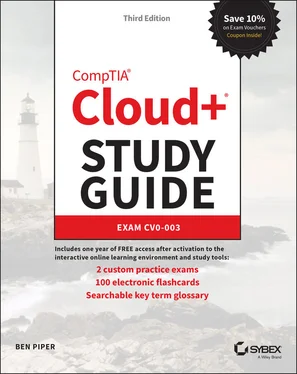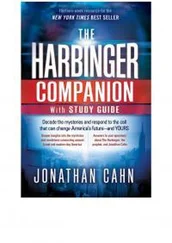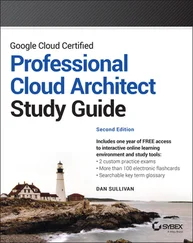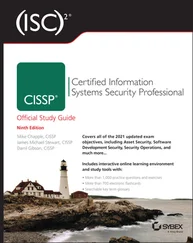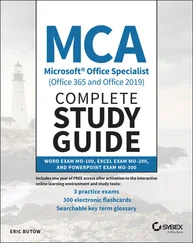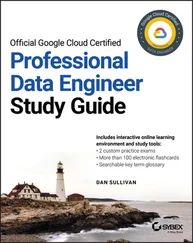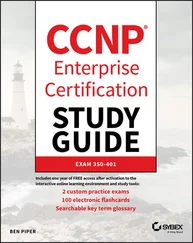54 B. Edge locations are not complete cloud data centers. There are cloud connection points located in major cities and offer local caching of data for reduced response times.
55 C. The recovery time objective is the amount of time a system can be offline during a disaster; it's the amount of time it takes to get a service online and available after a failure.
56 B. A warm site approach to recovering from a primary data center outage is when the remote backup of the site is offline except for critical data storage, which is usually a database.
57 E. A cold site is a backup data center provisioned to take over operations in the event of a primary data center failure, but the servers and infrastructure are not deployed or operational until needed.
58 B. The restore point objective is the point in time that data can be recovered.
59 A. Synchronous replication offerings write data to both the primary storage system and the replica simultaneously to ensure that the remote data is current with local replicas.
60 B, C. The restore point and restore time objectives are the measurements for the amount of data lost and the time needed to get back online after an outage.
61 C. Cloud automation systems offer the ability to add and remove resources dynamically as needed; this is referred to as elasticity.
62 B. With the PaaS model, the cloud provider will maintain the operating system and all supporting infrastructure.
63 C. The higher up the services stack you go, from IaaS to PaaS to SaaS, the more difficult it will be to migrate. With IaaS, most of the cloud operations are under your direct control, which gives you the most flexibility to migrate. However, if the cloud provider controls the application, you may not have many migration options.
64 A, B, D. Cloud computing operates with a utility business model that charges you only for the resources that you consume. This model enables you to scale your cloud fleet to meet its current workload and be able to add and remove capacity as needed. There are many options to use elasticity to scale cloud operations, including vertical and horizontal scaling and bursting.
65 B. Scaling up, or vertical scaling, will add resources such as CPU instances or more RAM. When you scale up, you are increasing your compute, network, or storage capabilities.
66 C. The establishment of average usage over time is the data that gets collected for a baseline report.
67 B. Cloud bursting allows for adding capacity from another cloud service during times when additional resources are needed.
68 B. The measurement of the difference between a current reading and the baseline value is referred to as the variance.
69 C. Change management includes recording the change, planning for the change, testing the documentation, getting approvals, evaluating and validating, writing instructions for backing out the change if needed, and doing post-change review if desired.
70 C. The ability to disable an account can be helpful in situations where the account will need to be reactivated at a future date and does not need to be deleted.
71 B, E, F. Trends, usage, and deficiencies are all management report outputs that can be identified using object tracking.
72 A, D, E. CPU, RAM, and network utilization are all important objects to manage for capacity and utilization tracking. Storage volume tiers and OS versions do not apply to this scenario.
73 D. Objects are queried to gather metric data.
74 B. Tracking object performance data should match with the guaranteed levels outlined in the service level agreement.
75 C. A dashboard is a configurable graphical representation of current operational data.
76 B. If a server is using all of its network bandwidth, then the most logical solution is to increase the network adapters' bandwidth or add a second adapter and create a teaming configuration.
77 A. Horizontal scaling is the process of adding servers to a pool for increased capacity. Round-robin is a load-balancing metric and does not apply. Elasticity is the ability to add and remove resources, autoscaling is the automated process of adding and removing capacity, and vertical scaling is expanding a server.
78 E. Vertical scaling is the process of upgrading or replacing a server with one that has greater capabilities.
79 A, C, D. Server performance can be increased by adding CPU processing, memory, and network capacity. SLA, ACL, and DNS are not related to increasing server capacity.
80 D. Cloud reports are formatted collections of data contained in the management or monitoring applications.
81 B. The cloud service provider owns its automation and orchestration systems, and they cannot be directly accessed by the customer.
82 C. It's common for batch processing to be performed on database applications.
83 B. A large number of users downloading a new application would cause an increase in network bandwidth usage.
84 D. A baseline measurement is used as a reference to determine cloud capacity increases and decreases.
85 C. The Domain Name System records need to be changed to reflect the new IP address mapped to the domain name.
86 C. Databases read and write requests utilize storage I/O and should be the focus for troubleshooting.
87 C. Elasticity allows for cloud services to expand and contract based on actual usage and would be applicable to increasing storage capacity.
88 C. Workflow applications track a process from start to finish and sequence the applications that are required to complete the process.
89 A, C, D. Resources such as the amount of RAM needed, CPU cycles, and storage capacity are common systems that may become saturated as your cloud compute requirements grow.
90 B, C. In addition to the web servers, IP addresses may be required for the DNS server and the default gateway.
91 B. The question is asking about being able to access a specific cloud service. This would concern Jill having the authorization to access the storage volume. Authentication and SSO are login systems and not rights to services. A federation links user databases.
92 A. The tracert and traceroute commands are useful for network path troubleshooting. These commands show the routed path a packet of data takes from source to destination. You can use them to determine whether routing is working as expected or whether there is a route failure in the path. The other options are all incorrect because they do not provide network path data.
93 B, D. The Windows command-line utility nslookup resolves domain names to IP addressing. The Linux equivalent is the dig command. The other options are not valid for the solution required in the question.
94 B. The Windows Remote Desktop Protocol allows for remote connections to a Windows graphical user desktop.
95 C. The tcpdump utility allows a Linux system to capture live network traffic, and it is useful in monitoring and troubleshooting. Think of tcpdump as a command-line network analyzer. The dig and nslookup commands show DNS resolution but do not display the actual packets going across the wire. netstat shows connection information and is not DNS-related.
96 E. In a data center, terminal servers are deployed and have several serial ports, each cabled to a console port on a device that is being managed. This allows you to make an SSH or a Telnet connection to the terminal server and then use the serial interfaces to access the console ports on the devices to which you want to connect. The other options do not provide serial port connections.
97 C. Infrastructure security is the hardening of the facility and includes the steps outlined in the question, including nondescript facilities, video surveillance, and biometric access.
98 C, E. Common remote access tools include RDP, SSH, and terminal servers. IDSs/IPSs are for intrusion detection, and DNS is for domain name–to–IP address mappings and is not a utility for remote access.
Читать дальше
